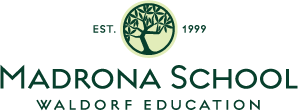Hello to you all from our bedroom offices, our couch classrooms and our kitchen science labs! We wish you good health and lots of rest. We miss our in-person community very much and we look forward to a time in the near future when we can gather together in our classrooms and as a school. In the meantime, Madrona School is continuing to offer learning materials and community through our program, Madrona At Home. Please reach out if you have any questions or concerns — we are always happy to hear from you!
Our head of school, Deborah Newlen shared the following in our newsletter after our first full week of COVID-19 related closure:
A Few Madrona at Home Tips for Families From Deborah
As we all live into our new shared experience, we can discover what works and supports us and our children. What follows is my list of tips based on the last week of alternate reality. Please feel free to email me with your ideas and we will include them in next week’s newsletter. It would be great to have the “Madrona Brain” transcend sharing in individual classes and represent community wide thinking.
Absolutely get outside for an hour a day, especially if you are spending more time at the computer than is normal.
Take a bath with Epsom salts and/or an essential oils.
Do something to distinguish down time from “on” time and remember to still create dedicated personal and family time that is not about work or school or specific responsibilities.
Check out the many museums online that have posted some or all of their collections because of the coronavirus.
Write a physical letter to someone you care about.
Notice that it is glorious spring; nature’s shelter in place season has passed.
— edited from our weekly newsletter, March 24, 2020













